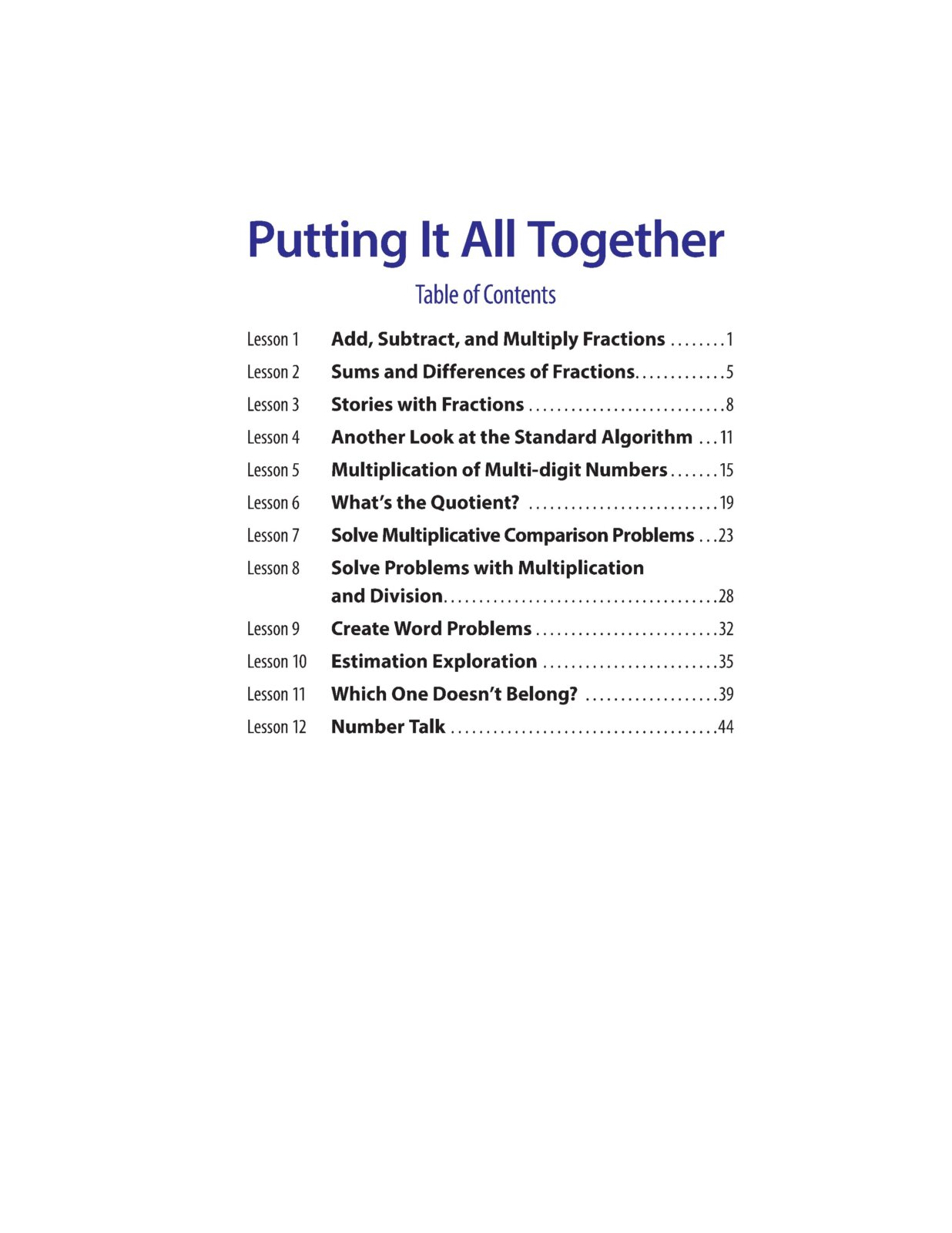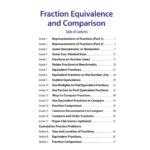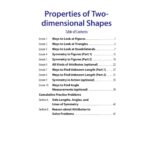Description
Unit 1: Factors and Multiples – In this unit, students extend their knowledge of multiplication, division, and the area of a rectangle to deepen their understanding of factors and to learn about multiples.
Unit 2: Fraction Equivalence and Comparison – In this unit, students extend their prior understanding of equivalent fractions and comparison of fractions. They use fraction strips, tape diagrams, and number lines to make sense of the size of fractions, generate equivalent fractions, and compare and order fractions with denominators 2, 3, 4, 5, 6, 8, 10, 12, and 100.
Unit 3: Operations to Fractions – In this unit, students deepen their understanding of how fractions can be composed and decomposed, and learn about operations on fractions. Students multiply fractions by whole numbers, add and subtract fractions with the same denominator, and add tenths and hundredths.
Unit 4: Hundredths to Hundred-Thousands – In this unit, students learn to express both small and large numbers in base ten, extending their understanding to include numbers from hundredths to hundred-thousands. Students take a close look at the relationship between tenths and hundredths and learn to express them in decimal notation.
Unit 5: Multiplicative Comparison and Measurement – In this unit, students make sense of multiplication as a way to compare quantities. They use this understanding to solve problems about measurement.
Unit 6: Multiplying and Dividing Multi-digit Numbers – In this unit, students extend their knowledge of multiplication and division to find products and quotients of multi-digit numbers.
Unit 7: Geometry – Angles and Angle Measurement – In this unit, students deepen and refine students’ understanding of geometric figures and measurement. In earlier grades, students learned about two-dimensional shapes and their attributes, which they described informally early on but with increasing precision over time.
Unit 8: Geometry – Two Demensional Shapes (Properties) – In this unit, students deepen their understanding of the attributes and measurement of two-dimensional shapes. The second half of the unit gives students opportunities to apply their understanding of geometric attributes to solve problems about measurements (side lengths, perimeters, and angles).
Unit 9: Putting it Together (Round-up) – In this unit, students revisit major work and fluency goals of the grade, applying their learning from the year.
All-Access members do not pay for this or any resource. Become an All-Access member today!
________________________
|
Get the MOST from My Teaching Library by connecting with us here: |


























Reviews
There are no reviews yet.